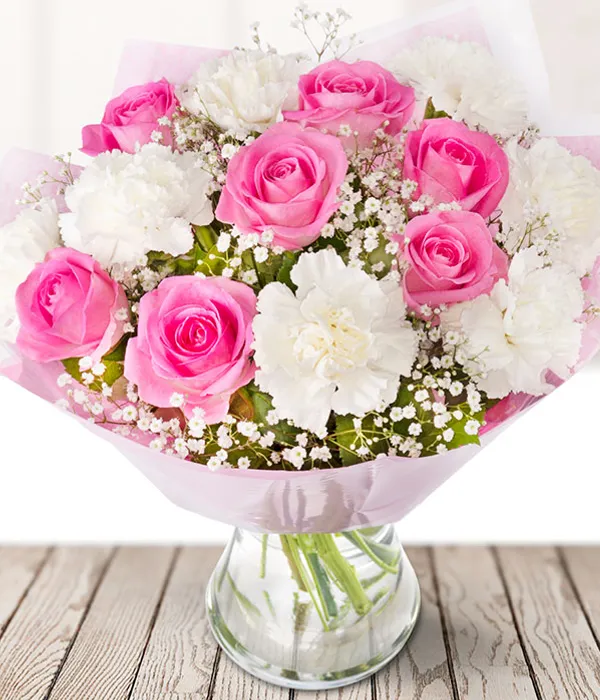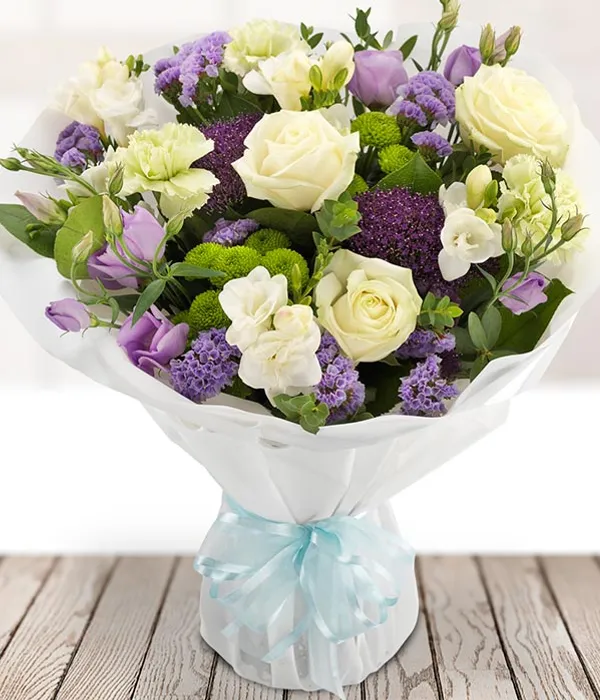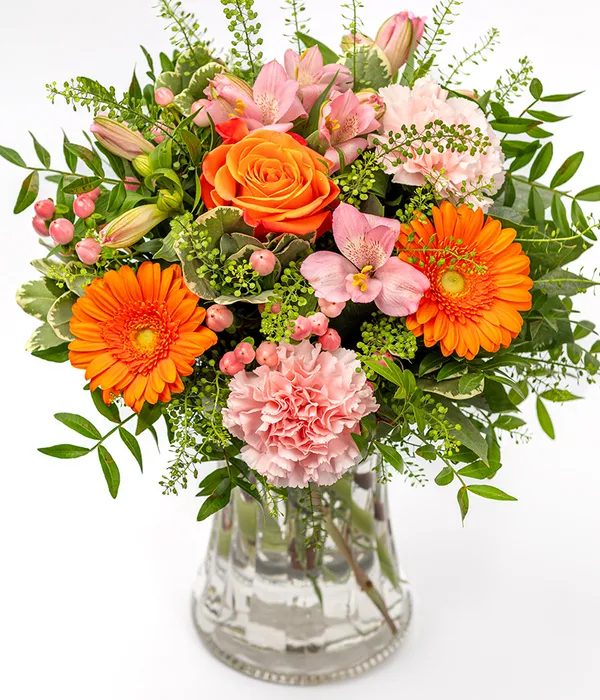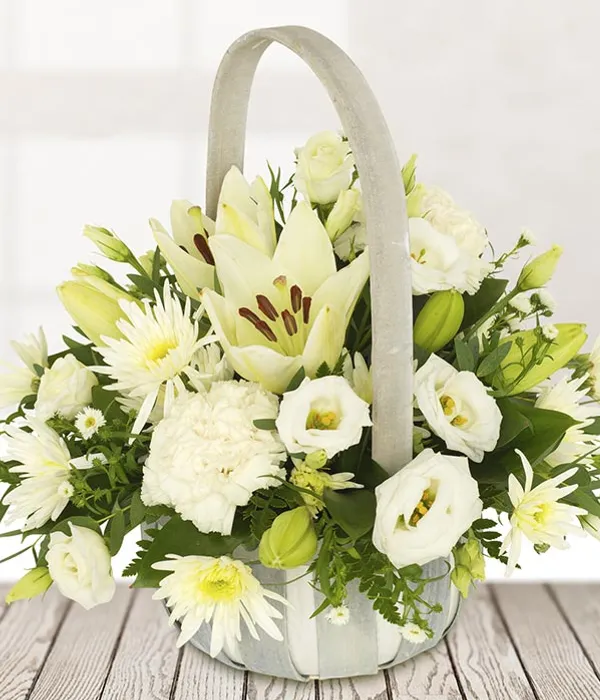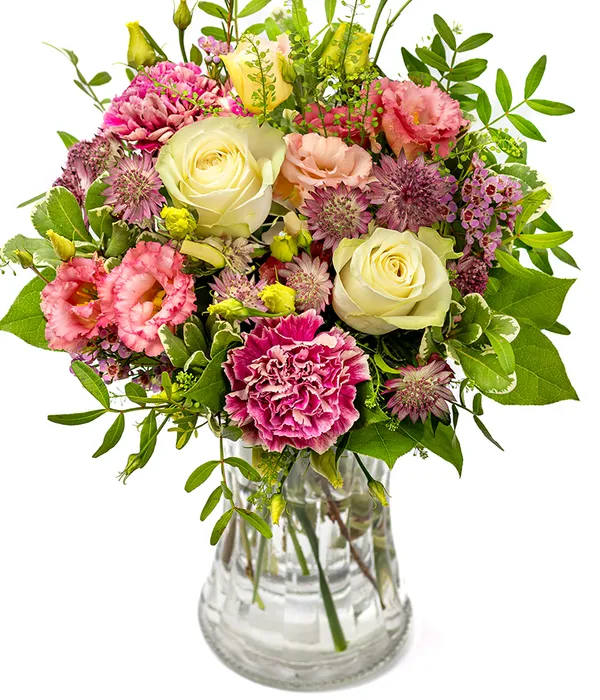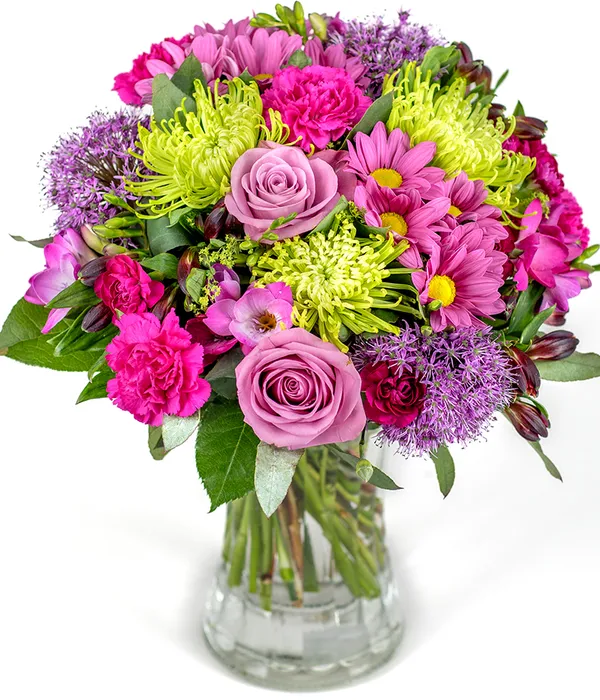Carnation Bouquets
It is believed to be native to the Mediterranean region, but as it has been cultivated for at least 2000 years, nobody is quite sure exactly where the carnation is from. In their natural form, a herbaceous perennial plant, they can grow up to 80cm tall, with leaves up to 15cm long. Easily recognised by their ‘frilly’ petals though they are not to be confused with the ranunculus spring flower.
Long Lasting Carnation Bouquets
The flower is normally about 3-5cm in diameter and offer a sweet scent. Naturally, the original colour is a bright pink-purple shade, but they can now be found in a multitude of colours including red, yellow, white and green. Furthermore, many varieties can dictate the colour of the flower, for example one of our favourites, the variegated carnation, has a striking appearance seen in very few other stems.
To grow your own carnations may be tricky in the UK as they require warmth and sunlight, as well as well-drained, neutral-to-slightly alkaline soil. There are some varieties that can be grown in gardens, including ‘Gina Porto’, ‘Helen’, ‘Laced Romeo’ and ‘Red Rocket’.
Flower Delivery Bouquets Every Day
Aside from its lovely scent and wide range of colours and types, the carnation can consistently last weeks on end; keep the water clean and the stems cut to maximise the enjoyment you get from your stems.
Like many of the flowers we see and love in our flower delivery bouquets every day, the colour of the carnation can say a lot about why you may be sending flowers. Most notably, the carnations worn on Mother’s Day, an occasion started by Ann Jarvis, can indicate whether your mother is alive, as morbid as this sounds, Ann chose to wear a white carnation to show the purity of her mother’s love but now a red carnation may be worn if your mother is a live and a white carnation if they are no longer with you.

